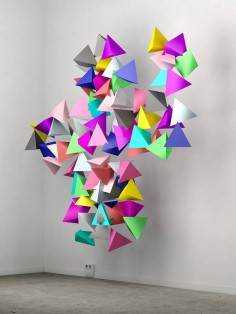JEREMY BAILEY
ДЖЕРЕМИ БЭЙЛИ
제레미 베일리
ג’רמי ביילי
ジェレミー·ベイリー
colossus
source: cermade
Jeremy Bailey is a Toronto-based new media artist whose work explores custom software in a performative context. Over the last decade Bailey has exhibited and performed at a range of international festivals and venues including the 2010 01SJ Biennial, HTTP Gallery, Subtle Technologies and in 2001 he co-founded the (now defunct) 640 480 Video Collective.
.
.
.
.
.
.
.
.
source: schirn-magazinde
Auch der Künstler Jeremy Bailey wird in Offenbach mit zwei Videos gezeigt, in denen sich dreidimensionale Formen an den Bewegungsabläufen des tanzenden Künstlers orientieren. Baileys Videos sind online und offline dieselben, sind aber offensichtlich eher in der digitalen Welt zu Hause.
.
.
.
.
.
.
.
.
source: canadianartca
So might one describe the performance persona of on-the-rise Toronto artist Jeremy Bailey—actually, his persona prefers the moniker “Famous New Media Artist Jeremy Bailey.”
Over the past few years, I’ve enjoyed watching Bailey’s augmented-reality YouTube videos as an escape from the über-seriousness of the art world.
In the absurd digital scenarios Bailey creates for his naive and narcissistic persona—changing the settings on a stock portfolio by dancing to a pop song; creating a new land mass by nodding his head; turning his face into an interactive TV set—the downcap-a artist demonstrates a simultaneous mastery and contempt of technology and its touted ability to solve our problems.
The tensions in Bailey’s videos—between expertise and amateurishness, man and machine, self-aggrandizement and self-deprecation—often collapse into satire (Bailey’s) and laughter (the viewer’s).
And so, it was with great expectations that I headed to Bailey’s recent exhibition at Toronto’s Pari Nadimi Gallery—and encouraged others to as well.
But when I viewed the show, I felt disappointed. And then I felt bad for feeling disappointed.
In that exhibition, Bailey did a worthy artistic thing: he took a risk. In his case, the risk involved heading into a more collaborative, social and object-oriented zone than the silly solo-performance-for-laptop videos I’ve loved to watch.
Unfortunately, as with any kind of change, it’s possible that Bailey’s new strategy hasn’t yet caught up with the proficiencies of his past work.


